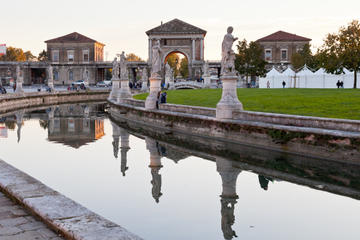Padua
TIME : 2016/2/22 11:38:49

Padua
Tucked away in the Veneto in northern Italy, Padua is a lively, stylish university city with an historic center hiding an often-overlooked secret. The outwardly plain Cappella degli Scrovegni was designed by wealthy medieval plutocrat Enrico degli Scrovegni, who commissioned the feted artist Giotto to fresco the chapel interior with religious imagery in 1303. The resulting cycle of frescoes sits under a cobalt-blue ceiling sprinkled with golden stars and is among Italy’s greatest art treasures, depicting the lives of the Virgin Mary and Jesus in an astonishingly realistic manner. The lower walls are smothered with allegories of vice and virtue and Giotto’s work is widely regarded as bridging the gap between Byzantine and Renaissance art.
Other highlights of a visit to Padua include fragments of fresco by Andrea Mantegna on display in the Chiesa degli Eremitani and the race through the city’s long history from pre-Roman times to present day – with some seriously good paintings by Giotto, Titian and Giorgione – in the Musei Civici agli Eremitani; both are adjacent to the Cappella degli Scrovegni. Also worth a peek are the medieval marvel that is the Palazzo delle Ragione and the Basilica di Sant’Antonio, which is the final resting place of the Franciscan monk St Anthony of Padua. The basilica’s interior romps through several architectural styles from Byzantine to Gothic and is richly ornamented with frescoes.
Practical Info
Cappella degli Scrovegni: Piazza Eremitani, 4. Open daily 9am¬–7pm; reserve tickets at least 24 hours in advance. Admission adults €13, children aged 6–17 €6 for 20-minute time slots. There are tourist offices at Padua railway station and in the Galleria Pedrocchi; both open Mon–Sat 9am–7pm, while the branch at the station also opens Sunday 10am–4pm. Padua is under half an hour from Venice, best reached by train from Santa Lucia station.
